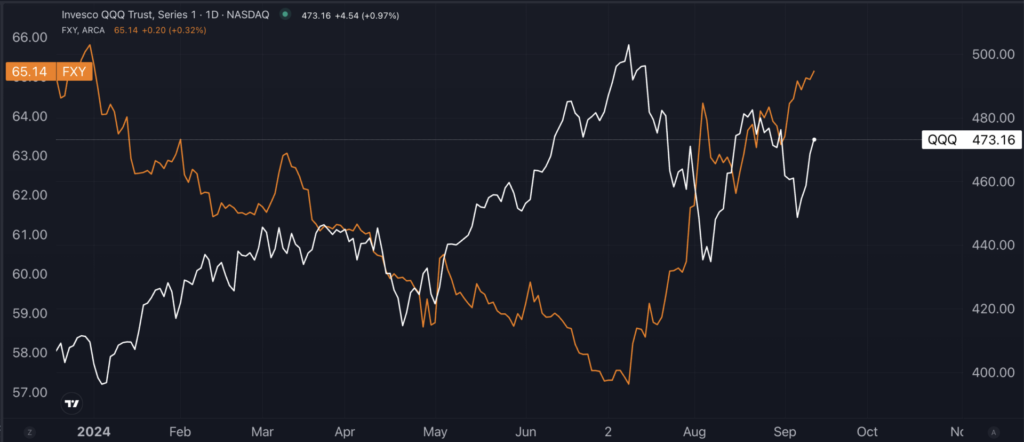Major Central Banks Slash Rates In Sync, But One Holdout Threatens To Derail Bulls' Momentum: 'Carry Trade Is Still Unwinding'

The world's leading central banks have opened a fresh phase of interest rate cuts, spurred by a softening in inflation across advanced economies.
With inflation sliding closer to target levels, policymakers are keen to unwind some of the policy restrictiveness that's become a drag on growth.
But a significant outlier on the global monetary scene is raising eyebrows—and concerns—for an interest-rate-fueled rally in the stock market.
On Thursday, the European Central Bank (ECB) took its turn, delivering a second 25 basis point rate cut following a similar move in June.
While ECB President Christine Lagarde stopped short of promising more cuts, she hinted that future decisions would be data-driven.
However, Frankfurt doesn't have the luxury of dragging its feet: growth is already on life support, and Germany, the region's economic heavyweight, is teetering on the edge of a recession.
"We still think that data will end up pushing the ECB to accelerate the cutting cycle," said Bank of America's European economist Ruben Segura-Cayuela in a post-meeting note.
Global Central Banks In Sync, Almost
Earlier this month, the Bank of Canada trimmed its key interest rate by 25 basis points to 4.25%. Policymakers there flagged concerns about missing their inflation targets on the downside—something that would have been unthinkable just a year ago, when inflation overshoot was the name of the game.
Meanwhile, an interest rate cut from the Federal Reserve next week is practically a done deal.
The only questions lingering for markets now are the magnitude and pace: Will the Fed cut by 25 or 50 basis points? Will it move at every meeting or take a more gradual, every-other-meeting approach?
The Bank of England remains a tight call, with economists forecasting a razor-thin 5-4 vote in favor of a rate cut next week.
"At this stage, markets are only discussing the magnitude and sequencing of this cut and those to follow. But regardless of the outcome, global monetary policy convergence is set to begin," Bank of America economist Antonio Gabriel noted recently.
According to Bank of America this newfound global monetary coordination is likely to weaken the dollar from its historically elevated levels, but any dollar decline could be tempered by potential U.S. policy shifts after the upcoming election.
The Bank of Japan’s Outlier Stance: A Wildcard For Markets
The one glaring outlier in this synchronized easing spree? The Bank of Japan (BOJ).
Tokyo has clearly decided it's not playing by the same rulebook.
While the world's major central banks are cutting, the BOJ hiked rates in July—its second hike this year following a move in March—and signaled that more hikes could be on the horizon. With annual inflation running at 2.8%, well above the BOJ's 2% target, Japan's monetary policy looks set on a divergent path.
BOJ Governor Kazuo Ueda reiterated earlier this month that the BOJ would continue raising rates if the economy and inflation behave as expected.
Ed Yardeni, the veteran market strategist, weighed in on this divergence, pointing to the ripple effects it's having across markets: "The carry trade is still unwinding. Expectations that the Fed will lower rates while the BOJ continues to hike have boosted the yen, forcing traders to unwind their carry trades."
For those not fluent in financial jargon, the carry trade refers to the strategy of borrowing yen at near-zero interest rates to invest in higher-yielding assets elsewhere, such as long-term Treasuries or even stocks. Now, with the yen appreciating, those trades are being unwound, sparking a rout in some of the market’s most richly valued stocks.
Yardeni highlighted a key inverse correlation between the yen and the Nasdaq 100, which has been holding since the start of the year.
Whenever the Japanese currency, as tracked by the Invesco CurrencyShares Japanese Yen Trust FXY, strengthens, the latter, as monitored through the Invesco QQQ Trust, Series 1 QQQ, weakens.
Chart: Inverse Relationship Between Japanese Yen And U.S. Tech Stocks

Read now:
Image created using artificial intelligence via Midjourney.
© 2024 Benzinga.com. Benzinga does not provide investment advice. All rights reserved.
Breaking news
See all






